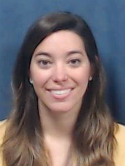DNA mismatch repair-deficient endometrial carcinosarcomas portend distinct clinical, morphologic, and molecular features compared with traditional carcinosarcomas Journal Article
| Authors: | Segura, S. E.; Pedra Nobre, S.; Hussein, Y. R.; Abu-Rustum, N. R.; Weigelt, B.; Soslow, R. A.; DeLair, D. F. |
| Article Title: | DNA mismatch repair-deficient endometrial carcinosarcomas portend distinct clinical, morphologic, and molecular features compared with traditional carcinosarcomas |
| Abstract: | Uterine carcinosarcomas (UCSs) are aggressive neoplasms composed of high-grade malignant epithelial and mesenchymal elements with most (∼90%) showing TP53 abnormalities. A subset, however, shows mismatch repair deficiency (MMR-D). We sought to describe their clinical, morphologic, and molecular features. Clinicopathologic data of MMR-D UCSs were recorded including age, stage, follow-up, mismatch repair and p53 immunohistochemistry (IHC), MLH1 promoter methylation status, and germline alterations, TP53 mutation status, microsatellite instability and mutational burden by massively parallel sequencing. Seventeen (6.2%) MMR-D were identified among 276 UCSs. Of MMR-D UCSs, the median age was 60 years. mismatch repair IHC loss is as follows: MLH1/PMS2 65%, MSH2/MSH6 18%, MSH6 12%, and PMS2 6%. MLH1 promoter methylation and Lynch syndrome was identified in 47% and 12% of cases, respectively. Cases with p53 IHC showed the following patterns: wild-type 70%, aberrant 20%, and equivocal 10%. Of cases with sequencing, 88% were hypermutated and microsatellite instability high. High-grade endometrioid, undifferentiated, and clear cell carcinoma was present in 53%, 41%, and 6% of cases, respectively and 47% also showed a low-grade endometrioid component. Most patients presented at an early stage (67%) and upon follow-up, 18% died of disease, 65% showed no evidence of disease, while 18% are alive with disease. Patients with MMR-D UCS are younger than the reported median age (70 y) for traditional UCS and most do not show p53 abnormalities. Low-grade endometrioid and undifferentiated carcinoma were seen in approximately half of all cases. Although UCSs have a high tendency for early extrauterine spread, most patients in our cohort presented at an early stage and at follow-up were no evidence of disease. MMR-D UCSs display distinct clinical, morphologic, and molecular features compared with traditional UCSs. © 2020 Lippincott Williams and Wilkins. All rights reserved. |
| Keywords: | microsatellite instability; dna mismatch repair deficiency; hypermutated phenotype; uterine carcinosarcomas |
| Journal Title: | American Journal of Surgical Pathology |
| Volume: | 44 |
| Issue: | 11 |
| ISSN: | 0147-5185 |
| Publisher: | Lippincott Williams & Wilkins |
| Date Published: | 2020-11-01 |
| Start Page: | 1573 |
| End Page: | 1579 |
| Language: | English |
| DOI: | 10.1097/pas.0000000000001561 |
| PUBMED: | 32804882 |
| PROVIDER: | scopus |
| PMCID: | PMC8259346 |
| DOI/URL: | |
| Notes: | Article -- Export Date: 2 November 2020 -- Source: Scopus |
Altmetric
Citation Impact
BMJ Impact Analytics
MSK Authors
-
 903
903Abu-Rustum -
 797
797Soslow -
 106
106DeLair -
 646
646Weigelt -
 12
12Segura -
 24
24Pedra Nobre
Related MSK Work



